Matador Network's Blog, page 511
March 18, 2022
Where to Stay: Zion National Park
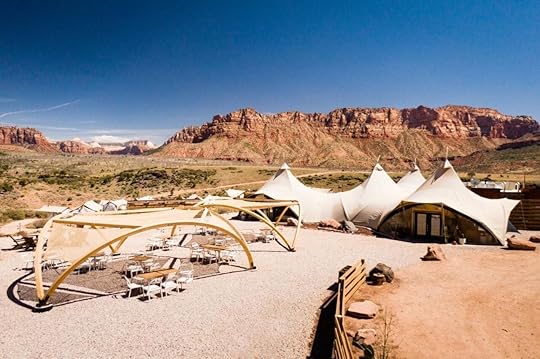
Imagine yourself with family, friends, or even alone on horseback, meandering the trails in and around Zion National Park. After a day of hiking or canyoneering, what’s better than relaxing by the pool or hot tub with a stunning view of the desert mountains behind you? Experience all this and more at Utah’s first-ever national park and really immerse yourself in the park’s nature, wildlife, and historical landmarks and features. Really get up close and personal with the park at these Zion lodging and dive into the geology, tours and history, and culture that Zion has to offer.
We hope you love the Zion lodging options we recommend! Just so you know, Matador may collect a small commission from the links on this page if you decide to book a stay. Listed prices are accurate as of the time of publication. See our full Advertiser Disclosure here.
Cable Mountain Lodge

Photo: Booking.com

Photo: Booking.com

Photo: Booking.com

Photo: Booking.com
The Cable Mountain Lodge is adjacent to the Zion National Park visitors center. Enjoy the best of both worlds here with the amenities of a top luxury hotel while experiencing the wilderness and nature of the national park. The lodge offers residences, suites, and studios. If you’re looking to immerse yourself in a relaxed mood, the lodge has an on-site spa and other amenities, including a pool and hot tub.
Price: From $296 per night
Under Canvas Zion
Photo: Booking.com

Photo: Booking.com
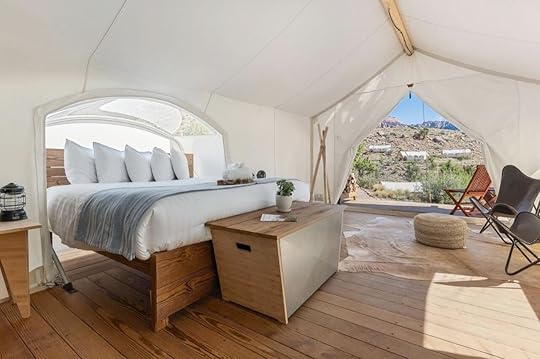
Photo: Booking.com
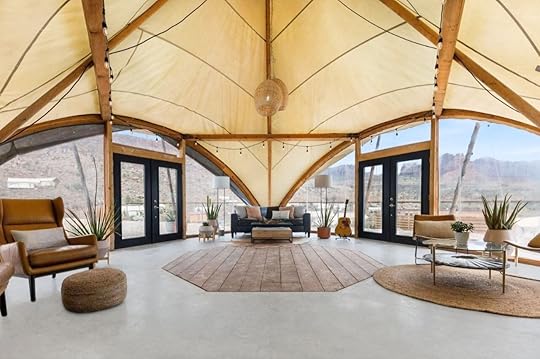
Photo: Booking.com
Want to feel what it’s like to sleep under the stars? This glamping experience Under Canvas Zion gives you that perfect opportunity to take on nature head-on and experience all that Zion has to offer. Under Canvas, Zion offers guests three tent types: the Suite, Angles Landing Suite, and the Stargazer. Amenities include on-site dining, fire pit, and smores, activities like yoga and kids activities, experience coordinate, and the tents include West Elm furnishings.
Price: From $439 per night
Zion Mountain Ranch
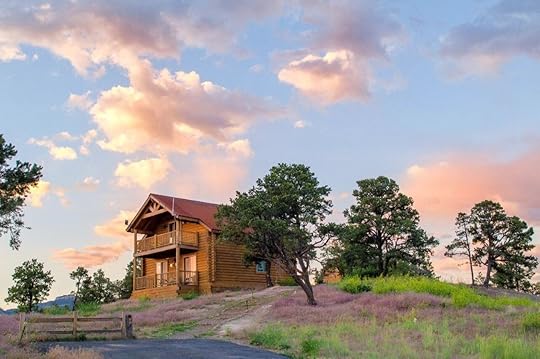
Photo: Booking.com

Photo: Booking.com

Photo: Booking.com

Photo: Booking.com
Slow down and unwind and take in the mountains wildlife with this premier Zion lodging with Zion Mountain Ranch. Zion Mountain Ranch is the authentic western experience perfect for anyone. The ranch has private cabins and premier lodges for any type of stay, whether a family, couples, or solo adventure. Zion Mountain Ranch hosts plenty of activities like jeep tours, canyoneering, guided hikes, and more.
Price: From $249 per night
Zion National Park Lodge
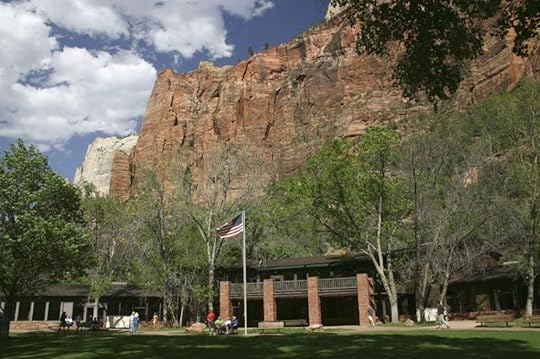
Photo: Zion National Park Lodge

Photo: Zion National Park Lodge

Set inside Zion National Park as the only “in-park” lodging is the Zion National Park Lodge. This lodging is now open and offers historic cabins, hotels, suites, and accessible rooms. This Zion lodging has many unique experiences and outdoor activities with its prime location. You can experience the geology of zion, tram rides, and more on-site activities. Zion National Park Lodge lodging does offer two dining options. There is Castle Dome Cafe for a casual, laid-back feel, and more upscale dining is found at the Red Rock Grill.
Price: From $220 per night
Zion Ponderosa Ranch Resort
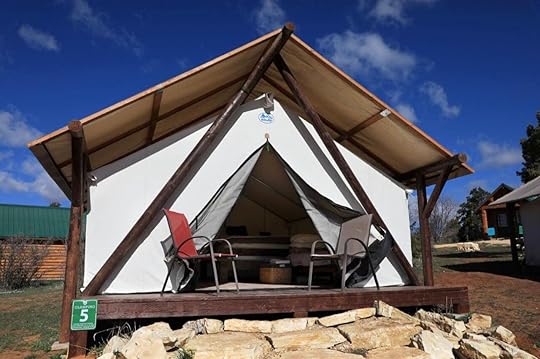
Photo: Booking.com

Photo: Booking.com

Photo: Booking.com
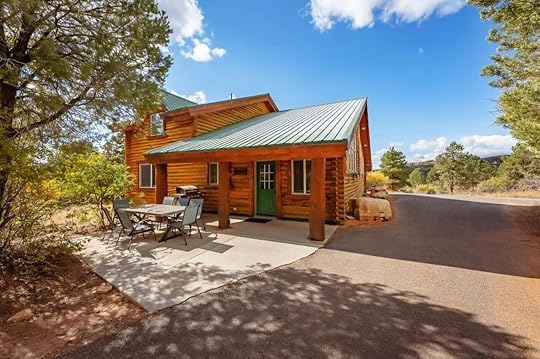
Photo: Booking.com
Just East of Zion National Park is the Zion Ponderosa Ranch Resort. This ranch resort has eight different accommodation options, each unique but upholding the mantra of the desert — solitude is king, and respect for nature is the lay of the land. There are lodging options from cabin suites to deluxe glamping to vacation homes. This resort also offers four guided recreation activities to explore like no other. The resort hosts many retreats and events like corporate retreats, experimental education events, family reunions, and outdoor women retreats.
Price: From $306 per night
Hampton Inn & Suites Springdale/Zion National Park
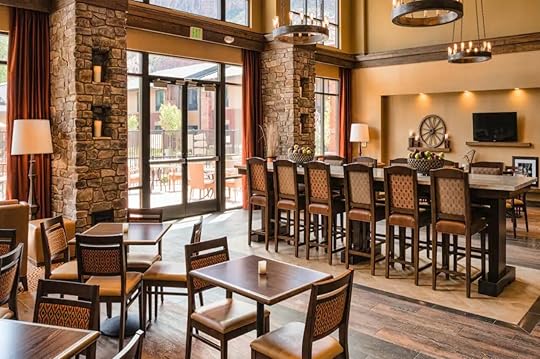
Photo: Booking.com

Photo: Booking.com

Photo: Booking.com
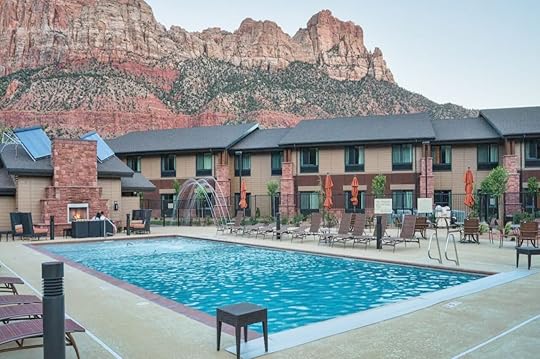
Photo: Booking.com
Just off Route 9 and less than a mile away from local restaurants and cafes is this Hampton Inn & Suites Springdale/Zion National Park hotel. This hotel is five minutes away from the Zion National Park visitor center and The O.C. Tanner Amphitheater. This hotel offers standard rooms, suites, and accessible rooms.
Price: From $362 per night
SpringHill Suites by Marriott Springdale Zion National Park

Photo: Booking.com

Photo: Booking.com

Photo: Booking.com
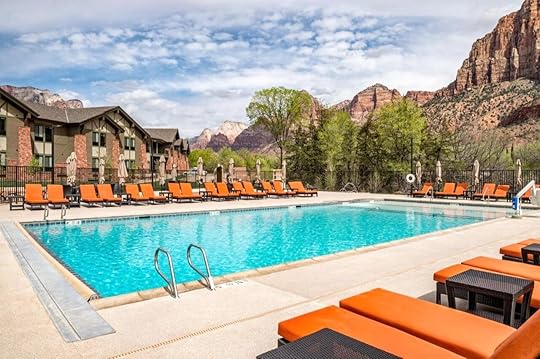
Photo: Booking.com
Experience a luxury Zion lodging stay at the Springhill Suites Premier hotel. This luxury hotel is centrally located and offers many amenities like a seasonal outdoor pool and hot tub with canyon views, indoor and outdoor fireplaces, and even viewing the night sky on a stroll along the Virgin River.
Price: From $309 per night
The Dwellings
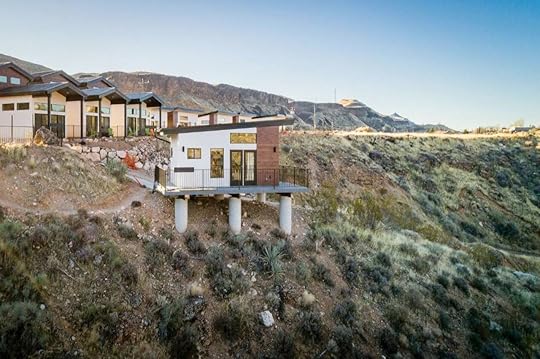
Photo: Booking.com

Photo: Booking.com

Photo: Booking.com

Photo: Booking.com
Want to feel like you’re on the edge of the earth? Well, these remote luxury tiny homes give you just that feeling and more. The Dwellings are inspired by smaller footprint living spaces. This zion lodging is just 25 minutes away from Zion National Park. These tiny homes have a cocktail bar in the backyard direct access to the Confluence Park Trail, and each of them comes with a private patio with stunning views. The Dwellings are centrally located and have easy access to other restaurants, grocery stores, and other shops.
Price: From $219 per night
Driftwood Lodge

Photo: Booking.com

Photo: Booking.com
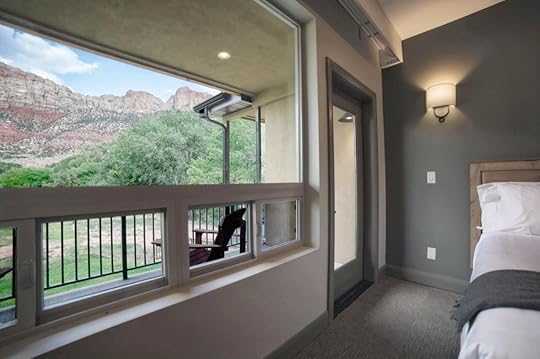
Photo: Booking.com
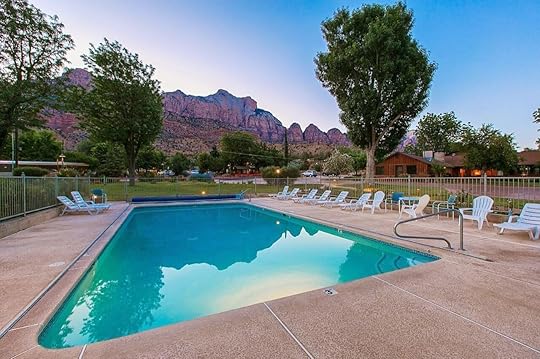
Photo: Booking.com
Experience luxury and comfort right near the heart of Zion at the Driftwood Lodge. The Driftwood Lodge has everything you need to explore nature, create your next adventure at Zion and relax and unwind. At Driftwood Lodge, you can experience views of the canyon, Virgin River, The Watchman, and The West Temple. On these 17 acres of private property, the luxury hotel rooms have private balconies and patios, a pool, riverfront beach access, wildlife on the property, and a top-rated contemporary, American cuisine restaurant called Kings Landing Bistro. 
Price: From $670 per night
More like thisWhere to StayThese Stunning Cabins are the Ultimate Zion National Park BasecampJungle Waterslides and Cowboys Make this Costa Rican Province Perfect for First-Time Visitors

They call Guanacaste the Texas of Costa Rica.
It’s not necessarily because the people of Costa Rica’s most vast province make a mean brisket, or drive around with “No Moleste Guanacaste” bumper stickers. But more so as a result of the long stretches of white, windswept hills dotted with cattle and ranch homes that can call to mind the Lone Star State.
But that kind of like-home comparison Americans are notorious for is selling Guanacaste short (no offense, Texas). Because beyond those golden hills, you’ll find jungles, mangroves, volcanoes, and world-class beaches, making Guanacaste almost a country unto itself inside the land of Pura Vida. With easy hiking trails, excellent infrastructure, and hotels with the comforts of home, it’s the best place to visit if you’re mulling a first trip to Central America.
An independent territory creates a region unlike any otherGuanacaste’s history is also vaguely Texan. It was a separate Spanish territory until 1824, when it gained independence from the crown and was given a choice to join Costa Rica or Nicaragua. Though Costa Rica welcomed Guanacaste with open arms and even has a national holiday on July 25 to celebrate its annexation, the culture is still markedly different.
That’s because when Spanish colonizers came to Costa Rica, most didn’t venture into Guanacaste’s sometimes-brutal environs, where fierce winds and triple-digit heat weren’t nearly as hospitable as the temperate coasts. You’ll find far more indigenous people in this region, working ranches and driving cattle.
The cattle culture has kept much of the region undeveloped, meaning getting around can involve some long drives. This also sounds familiar. Along those drives, you’ll see young men moving herds of Brahma across the landscape. To get a full education in their lifestyle and Costa Rican cowboy culture, spend a day at the Hotel Hacienda Guachipelin, a sort of dude ranch outside Rincon de la Vieja National Park. Here, you’ll interact with a working horse and cattle ranch, and learn why ranching is such a crucial part of Guanacaste’s culture.
The Hacienda also boasts a literal farm-to-table restaurant, where you’ll experience the fruits of a Guanacaste farm. Nearly all the produce is grown on-site, as is much of the beef. So when your tomahawk steak comes out with fragrant steam from zucchini, onions, and hearts of palm, the smells meld perfectly with the air in which they’re served.
Hiking through treetops and careening down a jungle waterslideLest you write off Guanacaste as a bunch of desert and ranches, remember it still sits in Central America, which means a volcano is never far away. But Guanacaste’s are especially well designed for visitors.
Rather than trekking all day to the top of a steaming caldera, guests in Guanacaste can take a scenic ride into Rincon de la Vieja National Park, home to nine volcanic craters and Costa Rica’s most active volcano. At Buena Vista Del Rincon, you can take a mile-ish long hanging bridge walk through the majestic treetops that fill the dry tropical forest, with views of the volcanic peaks peeking out between them. You’ll gaze down on ficus tree roots that stand over ten feet tall and frequently find yourself eye-to-eye with toucans, frigates, and other equatorial birds.
The park is also home to thermal hot springs, where you can cover yourself in therapeutic volcanic mud, wash yourself off, then enjoy a beer in one of its natural hot tubs. From there, it’s a short tractor ride back to the main visitor’s center, where you’ll get your adrenaline going again by sliding down a 1,400-foot water slide that careens through the jungle.
If you’re looking for something a little more active in the park, head to Las Pailas. It offers a pleasant 2.5-mile loop trail past bubbling mud pits with spectacular views of the volcanoes. For the quintessential tropical waterfalls, hit the Catarata Escondida and La Cangreja trails. Either can be done by a hiker with minimal experience, and the latter ends in a stunning blue lagoon.
Jungles and mangroves are equally accessibleFurther inland, Guanacaste moves from the dry forest into the legitimate jungle. Tenorio National Park sits right on the border of Guanacaste and Alajuela Province near Lake Arenal. Named for a still-active volcano, the small park winds blow through the rain forest along the magical blue Rio Celeste. The river is a Gatorade blue color from its natural Sulphur deposits, and as it meanders through the bright green jungle, the entire landscape seems artificially saturated.
The park boasts rich wildlife, including howler monkeys, squirrel monkeys, pumas, and tapirs. It feels a world away from the dry desert you were traversing an hour earlier and stands as a true testament to Guanacaste’s diversity.
For something closer to the beach, spend some time in Palo Verde National Park near Tamarindo. This endangered wetland is the region’s best place for birds, as its low-lying mangroves and dry tropical forest make a welcome habitat for both native and migratory animals. The best way to spot them is along a guided boat tour, where your seasoned guide will point out the herons, egrets, spoonbills, and ibis who make the place so special. Along the hour-and-a-half ride on the Tempisque River, you’ll likely also spot a crocodile or two, though they don’t really bother tourists.
Calming beaches and sunset sailsGuanacaste sits on Costa Rica’s Pacific side, but the water is still almost Caribbean warm. Its beaches aren’t the soft, powdery stuff you might find in the Caribbean—volcanic terrain will do that. But they still offer a stunning, golden contrast to the deep blue Pacific, and with larger waves and cool breezes, offer a welcomed respite from the hot, windy mountains.
Tamarindo is the best known of Guanacaste’s beaches, a surf town packed with expats. The shore is lined with lively bars full of young, adventurous people, and if you’re looking to meet some new friends from other countries, spend an afternoon hopping around. That said, if you’re here for pure, tropical relaxation, you may find the place a bit hectic.
For a similar landscape minus the crowds, head just north to Playa Grande. Here, surfers who aren’t into the “scene” find waves just as grand as Tamarindo’s, with far less in-water competition. Those who don’t surf will also enjoy the sparser crowds and remote feel of Playa Grande. Just bring along your own drinks if you’re looking for beers on the beach.
Further south you’ll find the gray sand shores of Playa Hermosa. While it’s not ideal for an afternoon of sunbathing, it’s a perfect jumping-off point for SCUBA and fishing excursions. And it offers the chance to ride horses along the ocean. For on-the-water fun, go a little past Tamarindo to Playa Portero. There you’ll find a number of catamarans that take guests out for a day on the Pacific. Panache Sailing offers an adventure beginning a little after noon, sailing to secluded snorkeling spots where you can gaze down at tropical fish, then relax on a beach that seems completely removed from civilization. The entire experience ends with a glorious purple sunset, complete with a cocktail toast.
How to do it all in GuanacasteMuch like Texas, the drives in Guanacaste are long. That’s not to say they’re boring, flat, and filled with staticky mariachi music on the radio. But the vastness of the province and the single-lane roads mean many destinations are a couple of hours apart or more.
Your best bet is to fly into Liberia (the city, not the African nation) and rent a car. From there, Guanacaste is really your oyster, as the roads are well-maintained and drivers are relatively safe. Just make sure you pay close attention to your GPS, as not every road in Guanacaste is obviously marked.
From there, you can post up at a number of hotels and resorts, depending on your travel style and budget. The Four Seasons Peninsula Papagayo is glorious, if pricey. The aforementioned Hacienda Guachipelin is slightly more rustic but gives you a good glimpse into the culture. But because activities are so spread out, and drives can be long, you may want to base where you stay more around what you want to do than the hotel itself.
Interestingly, a company called Beachbound is launching a sort of all-inclusive package for Guanacaste at the end of March, where you base at the Dreams resort in Las Mareas in the north of Guanacaste, and they shuttle you around to several adventures. You’ll be able to pick the experiences you want to have, and it eliminates the need for renting a car or booking tours and activities yourself. While you’re free to eat wherever it also includes your meals and drinks at Dreams. And while it’s not a completely authentic exposure to Guanacaste cuisine, it gets rid of the guesswork.
However you choose to experience Guanacaste, you’ll leave understanding it’s so much more than a Central American take on Texas. With lush jungles, bright, blustery hills, and glimmering blue beaches, the region offers a little of what everyone seeks in Costa Rica. And as a clean, easy, and altogether enriching experience, it’s perfect for a first-time visitor. Just, please, try to avoid making the obvious comparison out loud.
Scariest places in Edinburgh

With its looming 18th-century buildings, narrow, twisting streets, and bloody past, the Old Town of Edinburgh has long been considered a place where history, with all its ghosts and hauntings, stalks today’s streets. From old brothels to prisons, witch-burnings, body snatchers, and a book made from skin, the streets of Edinburgh are filled with the macabre and sordid. With a bit of planning and research, you too can see all the spookiest, seediest sites and peek into the history behind Scotland’s capital.
These are the scariest places in Edinburgh that you can visit.
Scariest place in Edinburgh #1: Old Tolbooth Prison
Photo: Christian Mueller/Shutterstock
Starting in the 1400s, the Old Tolbooth on High Street served as Edinburgh’s prison for 400 years. Renowned for its horrific conditions, the Old Tolbooth was a squalid, filthy prison that kept children as young as 12. It was also the site of judicial torture, and executions were carried out on top of a two-story addition, providing a stage for the public to see the hangings. Spikes ringing the gables of the Old Tolbooth displayed the dismembered body parts of executed prisoners, with several heads of Scottish nobility making the rounds in the sixteenth and seventeenth centuries. Deacon Brodie, the infamous cabinet-maker and thief who now has a tavern named after him just up the street from the site of the Old Tolbooth, met his end on this platform.
While the prison was demolished in 1817, you can still find its outline near St. Giles Cathedral, marked by brass bricks set in the cobblestones on each of the four corners. A mosaic granite heart marks where the entrance was. Locals hold that it’s good luck to spit on the heart, though it likely started as a rude gesture against the cruelties of the prison.
Where: The outline of the Old Tolbooth and the Heart of Midlothian Mosaic can be found at 197 High Street, just west of St. Giles’ Cathedral, by Parliament Square on the Royal Mile.
Scariest place in Edinburgh #2: Grassmarket Gallows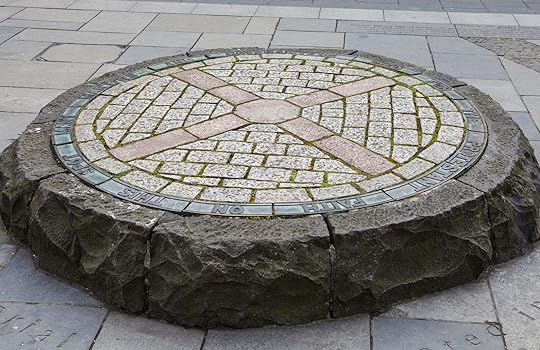
Photo: chrisdorney/Shutterstock
Now a lively square filled with shops and taverns, Grassmarket was once the traditional site of public executions before Old Tolbooth took over the dubious honor. Between 1661 and 1668 alone, over a hundred Covenanters, supporters of a Presbyterian Church of Scotland, were hanged there.
Grassmarket was also the site of the 1736 Porteous Riots. Two convicted smugglers who’d been held at Old Tolbooth were publicly hanged in Grassmarket. When a sailor ran forward to cut down one of the bodies, Captain Porteous of the City Guard fired his musket, killing a man behind the sailor, and then ordered his guards to fire into the crowd. Six more people died, and Porteous, the hangman, and the guards retreated from the mob to the guardhouse, where they continued to shoot into the crowd.
Porteous was arrested, imprisoned in the Old Tolbooth for murder, and sentenced to death. When the monarchy postponed his execution, a crowd of four thousand descended on the prison, overpowering the guards and yanking Porteous from his cell. They then dragged him to Grassmarket, beaten and lynched to death. He’s buried today in Greyfriars Kirkyard.
Today, the shadow of a gibbet is outlined in the paving stones on the east end of Grassmarket, accompanied by a memorial to the Covenanters.
Where: The gallows and Covenanter’s Memorial are at 87 Grassmarket Square, on the eastern end of Grassmarket.
Scariest place in Edinburgh #3: Witches’ Well
Photo: Philip Birtwistle/Shutterstock and Claudio Divizia/Shutterstock
Over two million people visit Edinburgh Castle each year, even more visiting the castle esplanade for its views over the city. However, few visitors are aware that this now bustling courtyard was once the site used by the city to burn people at the stake.
While witch hysteria gripped most of Europe in the early modern period, nowhere was it more commonplace than Scotland. Over 4,000 people were accused of witchcraft between the 1500s and 1700s in Scotland, with more innocent people executed than anywhere else. The accused, typically poor people with a knack for herbal remedies or unfortunate enough to get on a neighbor’s wrong side, were never afforded a fair trial and instead were tortured before they were drowned, or strangled, then burned at the stake.
The castle esplanade was the most popular site of burnings in Edinburgh. Upwards of three hundred people were murdered there, including Katharine Oswald, convicted of making a pact with the devil and murdered in 1629, and Jon Neill, a healer accused of transferring diseases to other people and murdered in 1631. The murders continued until 1727 when the last witch in Scotland was burned.
Just inside the esplanade is a small fountain and plaque known as the Witches’ Well, commemorating those murdered. The University of Edinburgh has also created an interactive map showing the residences and execution sites of the accused.
Where: The Witches’ Well can be found on the western wall of the Tartan Weaving Mill, in the esplanade of Edinburgh Castle on Castlehill.
Scariest place in Edinburgh #4: The Nor’ Loch
Photo: Pahol C/Shutterstock
Today, the Princes Street Gardens are beautiful public parks, the site of concerts, and the world-famous Winter Wonderland Christmas Market. However, the Gardens are a relatively recent arrival in Edinburgh’s long history. For centuries, the stretch of land between Old and New Town was a festering, flooded marsh known as the Nor’ Loch.
Initially serving as part of the defense of Edinburgh Castle, the Nor’ Loch was more often used for smuggling and suicides. The loch was also the site of witch dunking, where an accused witch was hogtied and thrown in the water. If they floated, they were a witch and executed. If they drowned, they were innocent, though also very much dead. While no archaeological evidence has been found to support witch dunking in the loch, there are stories of mobs attempting to drown witches there, only to realize the water was too clogged with sewage to get anything to sink, let alone a person. With no sanitation system in the city, people dumped their waste in the streets. When a heavy rain came, it washed the waste down the hill and into the Nor’Loch.
In 1820 workers found a casket on the west end of the drained Loch. Inside the single coffin were three bodies, possibly George Sinclair and his two sisters, found guilty of incest in 1627. Legend has it that Sinclair and his sisters were locked in a large chest with holes drilled in it and thrown in the Nor’ Loch to drown.
Where: The Princes Street Gardens and former Nor’ Loch are located between Old Town and New Town Edinburgh, just west of Waverley Station.
Scariest place in Edinburgh #5: The Brothels of Ranger’s ListIn 1775, a guidebook called Ranger’s Impartial List of the Ladies of Pleasure in Edinburgh began making its rounds in town. The book was supposedly written by James Tytler, the first Brit to (successfully) fly a hot air balloon and a writer for Encyclopædia Britannica, who somehow also found time to write early Yelp reviews for the sex workers of Edinburgh. Each entry lists the lady’s name, location, and attributes in a tongue-in-cheek style that likens sex workers to “volunteers of Venus”.
While most of the brothels in Ranger’s List have been destroyed, you can still visit Fountain Close on High Street, home of a Miss Moffat who was “very artful in her amours and almost worn out in the service”, as well as Bakehouse Close, the site of the Museum of Edinburgh, where Miss Hamilton, who had “tolerable good teeth” and was “not unwilling to indulge a friend, when properly applied to” set up shop across from Canongate Kirk. Bakehouse Close is also the site of the 1633 Acheson House, which, while not in Ranger’s List, was a brothel known as the Cock and Strumpet, after the rooster and trumpet coat of arms over the door. The close is also the site of Jamie Fraser’s printshop in the hit franchise, Outlander.
If you’d like to read Ranger’s List for yourself, you can find it online or book a date with a physical copy at the National Library of Scotland in Edinburgh. Gladstone’s Land, a museum in one of Edinburgh’s oldest houses, also hosts an Intimate Lives tour about the history of sex and sex work in Old Town.
Where: Bakehouse Close and the Acheson House can be found next to the Museum of Edinburgh on Canongate on the Royal Mile.
Scariest place in Edinburgh #6: Old Surgeons’ Hall, University of Edinburgh
Photo: chrisdorney/Shutterstock
During the seventeenth and eighteenth centuries, the University of Edinburgh was renowned for its medical school, particularly for up-and-coming surgeons. Dissections, vital for the students’ educations, took place in the Old Surgeons’ Hall anatomical theater, built in 1697.
Unfortunately, cadavers were hard to come by. While dissections were vital to the school (and popular with the public), Scottish law only allowed bodies of individuals who had died in prison or committed suicide to be dissected. Because of this, professors constantly struggled to keep up with the demand for dead bodies.
Suppliers turned to the next obvious source: graves. Grave robbing became such an issue that graveyards began posting guards and placing iron cages known as mort-safes over freshly dug graves. Mort-safes can still be seen in Greyfriars Kirkyard.
The notorious William Burke and William Hare decided to skip the grave robbing altogether, and murdered sixteen people, selling the bodies to Professor Robert Knox. The latter dissected the bodies at the Old Surgeons’ Hall. Eventually, the two grave-robbers were caught. While Hare was let go, Burke was executed in front of 25,000 people, his body then publicly dissected in the same anatomy school he supplied bodies to.
In 1832, dissections moved around the corner to Surgeon’s Hall on Nicholson Street, now the Surgeons’ Hall Museum. Inside you’ll find one of the largest pathology museums in the United Kingdom. Open to the public since 1832, the museum began as a “collection of curiosities” and includes skeletons, preserved limbs, examples of various diseases, and…a book made from the skin of William Burke.
Where: The Old Surgeons’ Hall is off Drummond Street in the High School Yards of the University of Edinburgh, while the Surgeons’ Hall Museum is on Nicolson Street. 
Disneyland on a Budget: How to Save Hundreds on a Family Trip

According to the US Census Bureau, the median household income in 2020 was around $67,500. With the rising cost of living, balancing a daily budget and planning forward for a baller family vacation might seem out of reach for the majority of families in the US. But it is possible, here’s how my family of four did Disney on a budget, all while getting the most value from our Disney experience.
How can families afford Disney on a budget?There is such a magical feeling when you walk down Main Street U.S.A., with Sleeping Beauty Castle straight ahead. Walt Disney’s vision back in 1955, has turned into California’s top family and tourist destination. Visiting Disneyland though can be an expensive experience — but it doesn’t have to be if you plan ahead. I factored five major expenses in my three-day, two-night budget, by doing research ahead before purchasing tickets, reserving a Good Neighbor hotel room, calculating transportation costs, merchandise expenses, food and beverages. My money-saving guide will help keep expenses down for your next Disneyland family vacation.
How to book your Disneyland ticket
Photo: Disneyland
Tickets for a family of four for two to three days can add up to over $1,000. First, purchase your tickets weeks or even months in advance to be sure a reservation is available for the dates you want to visit. Also don’t purchase an entrance ticket the day you arrive. There are other fun things you can do on your first day that don’t cost as much. Disneyland offers tier ticket options that include one-day/single-park, one-day/park hopper, multi-day/single park and multi-day/park hopper. On a park hopper ticket, visitors explore one park in the morning and then are allowed into the other park after 1:00 PM.
When to visit Disneyland
Photo: Disneyland
Nowadays, Disneyland Resorts doesn’t have much of a low season, except after New Year’s Day to early Spring. Disney is offering a special weekday ticket price for Southern California residents within zip codes 90000-93599. It started on January 3 and runs until May 26, 2022. So Cal guests who secured their tickets paid as low as $67 per person, per day with the purchase of a special three-day ticket.
Another low season with slightly fewer visitors begins in September after school resumes until the parks decorate for Halloween. Then there is a lull after Halloween until just before Thanksgiving. Sometimes ticket prices are discounted slightly during this season.
If you plan a trip during spring break, summer or winter break, know that the theme parks are crowded, the ticket prices are high, and may not be available to reserve, so plan ahead at least a month before your trip. The good news is the parks extend their hours during this high season, and provide additional entertainment, special decorations and evening events to make your experience more magical.
Disney FASTPASS and Disney MaxPass services have been retired, and now the Disney Genie is a complimentary digital app service offering updated tips and suggestions to have the most fun throughout the day. Download the Genie app for access to planning tools, maps of the park, forecasted wait times, dining reservations and mobile food and beverage ordering in advance, as well as mobile check-in all in one place. They also offer a Disney Genie+ for an extra $20 per day. This allows “Lightning Lane” access to almost every popular ride with the exception of Rise of the Resistance, Webslinger, and Cars. Since I was on a budget, I didn’t add this to my ticket reservation.
Where do you stay at Disney?
Photo: NadyaEugene/Shutterstock
Another way to get the most value during a dream trip to Disneyland is by staying overnight at one of the value Good Neighbor Hotels. Typically they are up to 50 percent less than one of the pricier Disneyland properties such as Disneyland Hotel, Disney Paradise Pier and Disney’s Grand Californian Hotel & Spa.
Good Neighbor hotels are AAA-approved and offer a choice of standard rooms, suites and villa-style accommodations. Many of these hotels offer a free breakfast, so at least one of your meals is covered each day. This saved us a bundle, as we filled up on nutritious food and hot and cold beverages before entering the park. We didn’t waste time waiting in long food and beverage lines at the park and walked straight to our favorite rides. I also packed granola bars, fruit snacks, fresh fruit, and some trail mix for pick-me-up snacks throughout the day.
Many of these hotels also offer free parking for guests, which saves up to $45 per day. Walking to Disney Parks instead of driving and parking in one of the Disney lots will save you $30 a day for standard parking and $45 a day for preferred parking near elevators and escalators.
Some hotels offer free theme-park transportation, a swimming pool, and Disney-inspired decor in the guest rooms. Be aware that these hotels price their rooms based on the high and low season too. Inside many of the hotels is a Guest Services desk to help you plan an even more memorable Disney vacation.
One of the Good Neighbor Hotels that backs up to Disney California Adventure is The Candy Cane Inn. It’s currently being refreshed and is set to open this spring, and will offer a complimentary deluxe continental breakfast buffet each morning. The nearby Desert Palms Hotel & Suites also offers a free hot breakfast buffet daily, as does the Marriott SpringHill Suites and the Hyatt House. And directly across the street from Disneyland is the Castle Inn & Suites. It looks just like a castle and offers a refrigerator, coffee machine and microwave in each room.
Where to purchase souvenirs for the family
Photo: BBbirdZ/Shutterstock
Another value tip is don’t purchase souvenirs at Disney. The first day we arrived, we didn’t have a ticket to the parks, so we walked to Downtown Disney, an outdoor Disney-theme entertainment, dining and shopping center. It’s free to enter if you don’t drive there. Parking is $10 for the first hour and $7 every 30 minutes, for a maximum daily rate of $66. For those who must drive, have your parking ticket validated when you purchase a minimum of $20 at any Downtown Disney retail store or quick-service restaurant. Then your parking cost is $10 for up to a four-hour visit. You can stay for up to six hours when you get your parking validated from one of the table service restaurants.
Before entering Downtown Disney, we noticed a lot of people wearing festive mouse ears and Disney shirts. We gave the girls $25 each and explored nearby Walgreens, CVS and A Market on the corner of Harbor and Katella. Each store had an array of colorful mouse ear headbands, themed shirts, autograph books, and Disney character stuffed animals that fit their budget and were 50 percent less than the same or similar items at Downtown Disney.
For example, we saw a Mickey Mouse shirt at Downtown Disney for $36.99 and at Walgreens similar shirts were $9.99 to $16.99. At a Disney store, a hoodie sweatshirt can cost $54.99, however, a similar hoodie outside of the park is $23.99. Bucket hats are $39.99 at a Disney store and a really cute baseball cap is $14.99 at CVS. Those fancy mouse ear headbands are $29.99 to $39.99 inside the Disney Parks, yet at Walgreens, they cost $6.49. Those looking for a plush Donald Duck is $29.99 at the park, but a similar plush outside of the park is $9.99.
Why you need a reusable bottle for Disneyland
Photo: Papin Lab/Shutterstock
Another money-saving tip is to fill up your coffee, water or juice in an insulated reusable water bottle before starting your day. Buying coffee, bottles of water, soda and other beverages add up during a long day. There are free water bottle refill stations and drinking fountains in various parts of the park, including Red Rose Tavern in Fantasyland, Star Wars: Galaxy’s Edge in Disneyland, Pirates of the Caribbean, Space Mountain, Autotopia and Goofy Sky School. A friendly Disney cast member will happily tell you where the closest one is for a refill. If you want a cup of ice water, head to one of the Starbucks in the parks and Downtown Disney and they will give you one for free.
Where and what to eat at Disneyland
Photo: Disneyland
When you get hungry, avoid the sit-down restaurants and visit the walk-up counters instead to save money. There are also numerous carts at Disneyland that sell the classic Mickey pretzel and ice cream for a festive treat. Instead of dining at the park for lunch or dinner, go back to your hotel during lunch or dinner and have a pizza party in your room. Go for a swim at your hotel when the parks are crowded and come back recharged at sunset to go on your favorite rides and experience Disneyland at night.
Our Disneyland budget for a family of fourMulti-day Disney tickets (regardless of dates) will cost $255 per adult and $240 per child for one park for two days, $315 per adult or $300 per child for both parks. For three days it’s around $330 per adult and $310 per child for one park, $390 per adult or $370 per child for both parks. If you want a park-hopper ticket, add $60 to the following costs.Many of the Good Neighbor Hotels are about $200 a night depending on the season.Food budget, even if you bring in your own snacks, beverages or sandwiches, it is around $120 per day for the four of us.Set aside $100 for souvenirs and merchandise to bring home the memories of your magical Disney family vacation. More like thisFamily TravelAlaska with Kids: How to Plan a Family Trip
More like thisFamily TravelAlaska with Kids: How to Plan a Family Trip
March 17, 2022
Women in Extreme Sports Discuss the Challenges of Working in a Male-Dominated Industry

The extreme sports industry is still overwhelmingly male. Despite a slew of fabulous brands, clinics, non-profits, and companies geared toward getting womxn into extreme sports like mountain biking, rock climbing, backcountry skiing, motocross, BMX, surfing, and more, the vast majority of participants and supporters are men. There are far more professional male athletes than female athletes in extreme sports, with more competitions and awards (and sponsorship money) for men. It’s also men who work behind the scenes at most of these events, from agents and event producers to photographers, mechanics, climbing route setters, judges, and course builders and designers.

Male photographers crowding for a shot at 2021’s Red Bull Rampage. Photo: Suzie Dundas
According to a 2016 survey from Singletracks — a well-known mountain bike forum and website — only about 13 to 18 percent of its readers are women. A 2010 mountain biking survey found that just 14 percent of its respondents identified as female, and bike club membership rosters rarely have more than 20 percent female members. It’s the same with outdoor rock climbing (33 percent women) and backcountry skiing (about 25 percent women). While the percentage of women in extreme sports is rising, it still has a long way to go to even be close to even. We talked to three women working in the extreme sports industry and asked for their input on being a woman in such a male-dominated landscape. Here’s what they said.
Some quotes and copy have been edited for length and clarity.
Rima Rackauskas, Live Broadcast Producer
Photo: Rima Rackauskas
I write ’run downs’ for [outdoor and sports-focused] shows. Essentially, it’s how the show breaks down, what the announcers or hosts will talk about, and how much time is spent on each segment. During the event, I ‘call the show’ in the broadcast truck.
As a kid, I was a major tomboy and jock. I wanted to play every sport out there, but I whittled my passion down to just playing volleyball in my teens. I got a scholarship to a division one college but ended up with a career-ending injury. After a brief stint coaching volleyball, I decided I needed to get into a totally different industry — I was sad that I wasn’t out on the court still playing myself — so I moved to the mountains to snowboard.
I had been skiing since I was about three years old and started snowboarding when I was about 13. Since I had such an extensive background in sports and coaching, it was easy to hone my skills and convert myself into a snowboard coach. I was the first park-certified female snowboard coach in Park City.
I decided to pursue coaching and moved to Mammoth [Mountain], where I eventually was coaching young elite snowboarders. I spent a few summers in France where I got into downhill mountain biking while coaching glacier snowboard camps and decided to get back into downhill bike competitions after that. Growing up, I used to mountain bike in the Santa Monica Mountains, so that was a natural transition.
After a few years of racing, my friends thought I should also compete in motocross, so I dove into that as well. Once I was nearly in my 30s, my body really started to take a turn – I had just been hard on my body for too long, so I gave it all up and moved to the North Shore of Hawaii to surf. It was there that I fell into action sports events broadcasting (back then, it was just webcasting) and I’ve been doing that ever since.
Regarding the industry in action sports events and broadcast: about 11 or 12 years ago, I noticed obvious fraternalism in the industry. Just about any crew back then was all dudes, and it was very rare to have even one or two gals around. There was an especially obvious protective vibe around camera positions and roles inside the broadcast truck. I worked with a couple of directors who were flagrant chauvinists and clearly threatened by me.
Regarding action sports in general: back when I first started, there was a disparity between women and men, but I think that was wholly due to the lack of exposure. There were fewer women doing those sports, most likely because they weren’t exposed at a young age. Lucky for me, my dad was really supportive of all of our sporting endeavors at a very early age which helped us excel.
In the last 20 years since I’ve been in action sports, I’ve seen a radical transformation in the disparity. Not only are there much larger numbers of women participating, but they are getting really legitimately good at the sports. Gone are the days of the saying, “She’s good for a girl…” as these women have pushed the boundaries and are stomping radical tricks and just ripping.

Chelsea Kimball hits a canyon gap at Red Bull Formation in Virgin, Utah, USA on 31 May, 2021. Photo: Catherine Aeppel / Red Bull Content Pool
In 2021, I was at Red Bull Formation in Virgin, Utah, and I saw a small group of women’s freeride mountain bikers just blow the doors off what we thought was possible. They were doing huge and terrifying drops and hitting boosters, whipping tails with style and riding lines top to bottom that would make most dudes crap their pants. It was a legendary week for women’s sports and made me feel so proud to witness and be a part of creating that content to show the world what women can do.
The pros of being a woman in a male-dominated industry? Well, it’s nice to stand out and almost feel special in the sense that you feel like you broke through barriers to achieve those roles if you’re at the top of your field. That being said, it comes at a price. All the years, as I was trying to prove that I was worthy, I had to work extra hard – harder than any of the guys.
I had to also take a lot of abuse. I wasn’t always well received by men in supervisory roles. There were males in the broadcasting trucks who would make derogatory comments or just give me the cold shoulder. It was sometimes hard to maintain confidence and keep the strength to press on. When you are getting belittled or bullied, it’s hard not to give up. Lucky for me, my sports background taught me never to give up and to always take on a challenge.
Now, 12 years later, I’m so glad I pressed on. I absolutely love my job and the field I work in and I would say we’ve come a really long way with the gender issue. I see so many more women coming into our field of broadcasting – I now often work with women directors and am so impressed with their professionalism and skillsets. It also seems like men react differently to us when we have management roles. In general, I’d say now they are not only used to us in their space, they seem to see us as equals.
Emily Tidwell, action sports and lifestyle photographer
Photo: Emily Tidwell Photo
I’m an action and adventure lifestyle photographer in the outdoor industry, focused mostly on snow and bike culture. I’ve been capturing images in the outdoor industry for nearly a decade, shooting competitions such as Nine Knights and Red Bull Rampage as have had images featured for ski resorts and brands, both large and small.
I’ve absolutely been discriminated against due to my gender in the action industry. From being told it was better to submit my images under a male pseudonym to being questioned about my legitimacy with a camera and whether I know how to operate it or not, and even having people assume I only shoot with a man because I am somehow connected to him romantically. Macro- and micro-aggressions and gaslighting are still rampant in the outdoor industry.
Anytime someone attempts to prove me weak ultimately makes me work ten times harder to prove them wrong, so maybe that’s a pro about being a woman in the industry? I’m constantly having to prove myself. I think as a woman, I can more openly connect with my clients and athletes with ease compared to some of my male counterparts. But I think I regularly also get my strength questioned both mentally and physically and, due to my small stature, get disregarded as incapable of doing a job.
I constantly get told how to do my job by older men in my field. A particular moment that stands out to me in the past year was when I showed up at an event as the lead photographer. I had opened my pack to change a lens when a senior male operations leader in a different department asked me if I knew how to operate such a large camera. He then told me he was a photographer as well, but that he shot “elite athletes,” to which I replied that I did as well. He then paused and smiled and said “No, I mean real elite athletes” and then proceeded to tell me how I could make my job easier for myself that day.
My favorite part is when other men tell me that those things have never happened to me. And that sexism and misogyny do not exist in the outdoor industry and that, maybe, if I focused more on my job and less on my gender, things like that would not happen.
But the thing is, I don’t call myself a female photographer: I am a photographer. And a damn good one. The fact that my features are feminine is enough fuel for someone to say I’m focused on my gender, but I just want to go out and do the job I love. That’s all. And I don’t want to be discriminated against because of it.
Suzie Dundas, Matador Network outdoor editorIn October 2021, I flew out to Virgin, Utah, to cover Red Bull Rampage, one of the mountain bike world’s biggest events. Over the course of four days, 15 of the top freeride mountain bikers in the world get free reign to build whatever jumps and features strike their fancy. There’s no fixed route down, so athletes can drop off cliffs, ride down narrow shoots, or build massive jumps across gaps in the terrain. On competition day, riders get two chances to ride from the ridgeline to the scoring podium. And judging is simple: whoever takes the hardest, most impressive, and biggest ride down wins. It’s a popular spectator event that always sells out. As you might imagine, it involves some pretty massive jumps and tricks, not to mention the potential for critical injuries.

I specifically remember this guy in the front left stepping directly into my shot. Fortunately, I kind of like the final product, but that seems to happen far more often than I’d like. Photo: Suzie Dundas
While the travel journalism world tends to skew female, the extreme sport world does not, and events like this are even more male- dominated, as was obvious as I walked the course from bottom to top on a media tour. Though our group touring the course included both men and women, the majority of the women were wives, girlfriends, or sponsors – very few were journalists. And none of the athletes are women or female-identifying, nor have they even been. In fairness to the former Red Bull Rampage racer who showed me around the course, his answer was a rousing “for sure!” when asked if a woman would be allowed to compete – if she qualified, of course, based on the qualifying scale made for and by men.
During events like this and others, the general vibe is always the same – it’s a subconscious boys’ club. I almost always get asked if I’m a photographer or journalist, with a somewhat surprised “oh” as the response. It’s not uncommon for men to step in front of my shots or jump in if I’m trying to talk to someone — and it’s hard not to think it’s because they assume I’m someone’s wife or girlfriend, not someone trying to do the same job as them. Unsolicited advice is common, and while I never mind advice if it’s during a conversation, it’s easy to tell the difference between genuine tips and someone trying to “give the new person pointers.” It feels akin to being treated like an intern in an office, as if I’m perpetually “the new kid” who needs all the help she can get. While I like to think most men aren’t doing it on purpose, men have a responsibility to examine the unconscious things they’re doing that turn women off from feeling welcome, from something as minor as taking all the seats in the media tent to something a major as only recommending men for writing and editing jobs.

Spectators crowd the cliffs to watch the Red Bull Rampage riders compete. Photo: Suzie Dundas
Post-event, being a female isn’t a problem, in my experience, for pitching coverage, but ultimately, being one of the few women at events is noticeable and feels it requires more effort than it should to work my way in to stories and interviews. I like to think that photos and stories speak for themselves; I doubt if many people ever notice bylines, anyway. Ultimately, I love extreme sports like mountain biking and won’t stop covering them – but I do hope to see more women coming into the field. Maybe we can build our own old girls’ club one day. 
More like thisFemale Travel8 Badass Female World Record-Breakers who Proved Women Can Do Anything
Tarrytown’s History, Seafood, and Hiking Trails Make for a Perfect Weekend Getaway from NYC

Tarrytown, New York, has a spooky reputation.
Located just 25 miles north of New York City on the eastern side of the Hudson River, Tarrytown is the legendary home of Washington Irving, who is sometimes called America’s “Founding Father of Literature.” Irving wrote one of the first ghost stories to come out of the United States: The Legend of Sleepy Hollow. The town where Crane encounters this malicious apparition, Sleepy Hollow, is right next to Tarrytown.
Given that Ichabod Crane and the Headless Horseman is now deeply embedded in America’s Halloween traditions, you’d think Tarrytown and the adjacent Sleepy Hollow would make the ideal location for a chilly Autumn getaway. But it might be even better suited for a spring or summer getaway.
You’ll find yourself wanting to spend most of your time outdoors if you visit Tarrytown once the flowers start to bloom. It’s right on the Hudson River, which means springtime visitors can enjoy idyllic river views from almost all of Tarrytown’s pristine parks. There are ample opportunities to craft an outdoor adventure that suits your comfort level, from casual walks through gardens and public estate grounds to more challenging hikes at a nearby nature preserve.
Tarrytown is all about its historical legacy, which is deeply rooted in the history of America’s founders and leaders of industry. The Rockefeller Family Estate, Kykuit, is unfortunately closed at the moment, but there are many other historic houses in Tarrytown open to the public.
Visiting these historic places can transport you back in time to the 19th century and even further back to America’s founding while taking in imposing houses and magnificent grounds. For visitors who’re especially keen to immerse themselves in the history of Washington Irving’s impact on the area, colonial life, and the American Revolution, The Historical Society of Tarrytown and Sleepy Hollow offer walking tours that cover all these subjects.
One can’t-miss day trip is, of course, Sleepy Hollow. Just a five minute drive from Tarrytown, you’ll find historic walking trails and landmarks, real-life locations from Irving’s stories, and opportunities for more rigorous outdoor excursions.
Its location along the Hudson River means that Tarrytown specializes in fresh seafood, so when you sit down to dine expect fresh oysters, scallops, and clams among other marine delicacies. A romantic dinner on the Hudson River is a must if you’re traveling as a couple, otherwise groups of friends will find a welcome environment at a beer garden overlooking the Tappan Zee Bridge.
No matter what the vibe of your vacay is, everyone will find something to love about Tarrytown, from eclectic restaurants, to historical sites, to seemingly endless trail options for hiking and walking.
Here’s everything you need to do, see, and eat in Tarrytown, New York.
We hope you love the Tarrytown hotels we recommend! Just so you know, Matador may collect a small commission from the links on this page if you decide to book a stay. Listed prices are accurate as of the time of publication. See our full Advertiser Disclosure here.
Where to go in Tarrytown, New York
Photo: Alexander Friedman/Shutterstock
Sunnyside, Washington Irving Historic House: Washington Irving’s estate is open for tours from August 6 to September 12. The lush grounds offer pathways to wander and roam on your own, but there are also tour guides (in costume!) stationed at different points around the property to fill you in on the history of Irving’s life in Tarrytown and the many intricate aspects of colonial life and architecture.
Where: 3 W Sunnyside Lane, Irvington, NY 10533
Lyndhurst Mansion: Located on the banks of the Hudson River, Lyndhurst Mansion and the accompanying grounds are the perfect location for a romantic stroll. There are guided tours of the impressive houses available, but curious explorers might also be keen to seek out the rose garden, restored Civil War-era paths, and so-called viewing platforms, where you can gaze out at the river views among the trees. A Daily Grounds Pass is required before entering the estate, which you can purchase online before your arrival.
Where: 635 S Broadway, Tarrytown, NY 10591
Scenic Hudson Riverwalk Park: The grass terraces and lawns at the Scenic Hudson Riverwalk Park are a great spot to lounge on a sunny day, but it’s the waterfront walkway that will make you stop and stare at the view of the Hudson River and the Tappan Zee Bridge, especially if you plan a walk for just around sunset.
Where: 250 W Main St, Tarrytown, NY 10591
Where to go in Sleepy Hollow, New York
Photo: Evan El-Amin/Shutterstock
Kingsland Point Park: Eighteen acres of forested parks, playgrounds, and hiking trails make Kingsland Point Park a worthy visit if you’re the type who likes to spend their vacations outdoors. The biggest draw to this park, however, is that it offers a close up view of the historic Tarrytown Lighthouse, which has been in operation for about 78 years.
Where: Tarrytown Light-Kingsland Point Path, Sleepy Hollow, NY 10591
Rockefeller State Park Preserve: All 1,700 acres of this nature preserve were donated by the Rockefeller family. Bird watching and horseback riding are just a couple of the activities encouraged on the preserve, but visitors can simply explore pastoral countryside of upstate New York and the preserve’s bridges, streams, and colonial stong walls and rock outcroppings.
Where: Route 117, 1 mile east of Route 9, Sleepy Hollow, NY 10591

Photo: WanderRoamRove/Shutterstock
Sleepy Hollow Cemetery: Washington Irving, Andrew Carnegie, and William Rockefeller are all buried in this legendary cemetery – and you don’t need to wait until Halloween to see it for yourself. Visitors can tour the gravesites on one of Sleepy Hollow Cemetery’s official tours (it’s strictly forbidden for groups to wander the grounds alone, however). History buffs can take a day tour, but there are evening lantern tours and an even darker and spookier two hour tour that covers all the murderers and crminals who have passed through the region. One other landmark to check out while you’re there is the Headless Horseman Bridge – the original bridge that was the inspiration for a scene in Irving’s story has long since rotted away, but the cemetery bridge is the perfect backdrop for a spooky selfie.
Note that cemetary staff emphasize that all guests must behave respectfully of those that have been laid to rest there.
Where: 540 N Broadway, Sleepy Hollow, NY 10591
Old Croton Aqueduct Trail: Originally a corridor that supplied clean water to New York City, the Old Croton Aqueduct Trail runs from Croton-on-Hudson to Yonkers. Today, the trail passes straight through Tarrytown and Sleepy Hollow. Stroller friendly and usually peppered with local joggers, this easy trail is a fun way to take in village life and natural landscapes in both towns.
Where: Old Croton Aqueduct State Historic Park, 15 Walnut Street, Dobbs Ferry, NY 10522
Where to eat in Tarrytown, New YorkView this post on InstagramA post shared by RiverMarket Bar & Kitchen (@rivermarketbarkitchen)
RiverMarket Bar and Kitchen: Natural and sustainable ingredients are the highlight of this beloved Tarrytown restaurant. Like many restaurants in Tarrytown, the focus here is on fresh seafood, and it comes in many delectable forms here: clam chowder, lobster bisque, grilled oysters, tuna tartare, and much more.
Where: 127 W Main St, Tarrytown, NY 10591
Mint Premium Foods: This cafe focuses on Mediterranean and Italian dishes that lean toward decadent flavors, including grilled dates, truffle burrata, seafood risotto, and wagyu beef burgers.
Where: 19 Main St, Tarrytown, NY 10591
View this post on InstagramA post shared by Half Moon (@halfmoonrestaurant)
Half Moon: Located in Dobbs Ferry just 15 minutes outside of Tarrytown, Half Moon is directly on the bank of the Hudson River. The views, especially at sunset, are transfixing as the orange and pink light plays off the rippling water. You won’t be disappointed in the food either. Fresh oysters and ceviche accompany heartier mains like lamb, lobster, and duck.
Where: 1 High St, Dobbs Ferry, NY 10522
Coffee Labs Roasters Inc.: There’s always a line outside this coffee shop in the morning, which hints at its status as a local favorite. Certified by the The Green Restaurant Association, the coffee shop features specialities like frozen blended coffees, fruit smoothies, and CBD infused coffees.
Where: 7 Main St, Tarrytown, NY 10591
Bridge View Tavern: Besides craft beers on tap and an outdoor beer garden, the appeal of this relaxed tavern is its bird nest view of the many Tarrytown landmarks, including the Tappan Zee Bridge and the Tarrytown Lighthouse.
Where: 226 Beekman Ave, Sleepy Hollow, NY 10591
Where to stay in Tarrytown, New YorkTarrytown Estate on the Hudson: The center of this sprawling hotel (which is split into several buildings) is a stone mansion built in 1840. The grounds cover 26-acres and overlook the Hudson River Valley.
Where: 49 E Sunnyside Ln, Tarrytown, NY 10591
Castle Hotel and Spa: Described as a “Norman-style castle,” this luxury hotel is positioned at one of the highest points in the Hudson Valley and has spectacular views. The Equus restaurant, awarded Four Diamonds from AAA, is also on the property.
Where: 400 Benedict Ave, Tarrytown, NY 10591
More like thisTravelThe Perfect Day Trip to Hudson, the Jewel of Upstate New YorkA Cruise Ship Ran Aground in the Caribbean and Passengers are Tweeting Live Updates

Cruise ship names can be full of whimsy and appeal to the impulse to break out from the day to day. Often it matches the experience. Occasionally it becomes a point of irony, like with the Norwegian Escape, which left Orlando on March 12 and ran aground on the seabed at its first stop in Puerto Plata, Dominican Republic.
The 164,000-ton ship was built in 2015 and can hold more than 4,000 passengers, according to CNN. It was no match for the shallows, however. No one was injured, though the ship sustained minor damage to the hull. And through it all, people onboard with Twitter accounts have been doing what those with Twitter accounts do: tweet through it.
As a Twitter user who goes by The Disney Dude so eloquently put on Twitter: “Well, we seem to have run aground #Norwegian #NorwegianEscape”.
Well, we seem to have run aground #Norwegian #NorwegianEscape pic.twitter.com/V0LcRxG7XF
— The Disney Dude (@DisneyTalk101) March 14, 2022
Wind caused the issues, CNN reports, and tugboats refloated the ship and returned it to port at high tide to be inspected.
#NorwegianEscape ran aground today in #PuertoPlata…. But everything remains to be FANTASTIC onboard! I love Norwegian, and they take such amazing care of their guests! we are in GREAT hands.
pic.twitter.com/yWFXbppDnO
— Robbie O’Malley (@robbieo625) March 15, 2022
A letter posted on Twitter with a stamp from the captain of the ship noted that those who booked flights through Norwegian Cruise Line will have things taken care of while guests who booked independently will be transported to Orlando via charter flights and then be bussed to Port Canaveral to get their cars.
Leave it to me to go on a cruise that ends up running aground in the Dominican. #NorwegianEscape pic.twitter.com/E8zRazcOtP
— Belle Es You (@SouthernbeLLSU) March 15, 2022
Getting reimbursed in the latter case could end up being a pain, though.
“Please contact your travel insurance provider for reimbursement options,” the captain’s letter reads. “We have made internet and phone access available to you on board, so that you may make any necessary arrangements.”
#NorwegianEscape
Evacuating us in the next 72 hours pic.twitter.com/ql1cwXpUzq
— The Disney Dude (@DisneyTalk101) March 15, 2022
As noted in another tweet, there are people who seem to be doing what cruise ships are made for even days after being grounded: going to the bars and restaurants. The Disney Dude even went so far as to describe his time at the bar on Wednesday as a “great time in here tonight.”
The show must go on. Good times on board tonight. #NorwegianEscape pic.twitter.com/1frLWtfVmd
— The Disney Dude (@DisneyTalk101) March 16, 2022
Others are coping with some dark humor.
We are so excited. We signed up for a special excursion on our cruise. Tomorrow we will get scuba certified and learn how to weld under water. #NorwegianEscape #shipwrecked
— (@USFironbull) March 16, 2022
It hasn’t been all tropical drinks and jokes for everyone, though. One person tweeted that they were trapped at the airport all day without updates.
@CruiseNorwegian What is going on? Trapped at the airport all day with no updates. Would have been great to get more than an hour notice to pack, get COVID tested and get off of the ship. Would have been lovely to be able to take a shower or have eaten. #NorwegianEscape
— Laura Padgett (@LauraLcisko) March 16, 2022
Another person added that there was “hours of chaos” only to be asked to be split from their husband on the return flight to Florida. Even The Disney Dude with his unbreakable spirit started to show little signs of longing to leave after the first round of people left the ship.
Charter flight inbound just flew past the ship. Take me with you #NorwegianEscape pic.twitter.com/ASXDpZywCZ
— The Disney Dude (@DisneyTalk101) March 17, 2022
Hopefully everyone gets off safely and in a timely fashion (and continues to tweet through it with that onboard internet Norwegian made sure to point out they’re still providing, as if turning it off was a serious consideration). At least the passengers can rest assured that their next cruise will be fully comped. 
Guide to Priority Pass

Ask any traveler, and they’ll probably tell you that airports are a tedious experience. If they don’t, one of two things is possible: They’re lying, or they have premium lounge access. Lounges are a relaxing oasis amid the frenetic bustle of an airport terminal, offering weary travelers free food, drinks, and chairs actually big enough for your body. Lounges often have an air of exclusivity and even inaccessibility, but while they might be restricted, they’re certainly not out of reach. It’s actually incredibly easy, and even cost-effective, to access airport lounges, and the Priority Pass is the most convenient way to do it.
What is Priority Pass and what benefits does it provide holders?Priority Pass is a membership program that gives travelers access to airport lounges around the world. While it doesn’t include all airport lounges, it’s among the largest networks of airport lounges, with over 1300 lounges around the world, including 150-plus in the US and more than 370 in Europe.
In addition to lounge access, Priority Pass also offers airport restaurant and shopping discounts. Usually, this comes in the form of a $30 stipend at participating airport restaurants, or a 10 or 15 percent discount at selected retail shops. To claim these benefits, all you have to do is show your Priority Pass card and a same-day boarding pass.
How do I get a Priority Pass? How much does Priority pass cost?There are two ways to become a Priority Pass member:
The first is by signing up directly on the pass’s website. There are three options — Standard, Standard Plus, and Prestige. A Standard membership costs $99 per year, and allows you to visit participating lounges for $32 each visit. Standard Plus costs $299 per year, and includes 10 free lounge visits (and $32 per visit afterward). The Prestige membership, designed for “frequent travelers,” costs $429 per year, and provides unlimited free lounge access.The second — and perhaps more cost-effective — way to become a Priority Pass member is through your credit card. Many credit cards with annual fees include a Priority Pass membership as one of the perks. These fees vary by card, as do the Priority Pass benefits attached to them. Given the high cost of purchasing direct Priority Pass membership, however, springing for a credit card that includes a Priority Pass membership will usually get you more bang for your buck.What travel rewards credit cards offer Priority Pass?These are some of the best credit cards with a Priority Pass membership to consider:
American Express Platinum Card – In addition to Priority Pass Select membership, this card also offers access to the exclusive Centurion Lounge network and Delta Sky Club, to even further expand your lounge portfolio. Cost: $695 per year.< Marriott Bonvoy Brilliant American Express Card – This card comes with Priority Pass Select membership, as well as a $300 Marriott statement credit. Cost: $450 per yearHilton Honors American Express Aspire Card – Perfect for Hilton loyalists, this card comes with Priority Pass Select as well as a $250 annual airfare and Hilton resort credit. Cost: $450 per year.Citi Prestige Card – In addition to Priority Pass Select membership, the Citi Prestige Card comes with five times the points on travel-related purchases. Cost: $450 per year.Hilton Honors American Express Business Card – One of the cheapest travel reward credit cards out there, this one comes with just 10 free Priority Pass visits, which could be a good option if you’re just looking to try out the program without spending too much. Cost: $95 per year.Chase Sapphire Reserve – Chase’s Sapphire Reserve card is unique as it allows access to both Priority Pass lounges, as well as airport restaurants — in the form of a dining credit. This dining credit also often covers a guest. The card’s cost is steep, but the $300 annual travel credit helps offset the price. Cost: $550 per year.U.S. Bank Altitude Reserve Visa Infinite Card – Like Chase, this card also gives travelers restaurant credits. And with $325 in annual travel statement credits, it makes the Visa Infinite more cost-effective too. Cost: $400 per year.How much do I need to travel to make my priority pass worth the price?Paying an annual fee for any travel-related perk means you should probably be a relatively frequent traveler. It also depends on your tolerance for airport food and beverages. If you don’t mind grabbing a quick refrigerated sandwich from Hudson News, or shelling out $12 for a beer at an airport bar, Priority Pass might not be for you. All those sandwiches and beers can add up quickly, though. With Priority Pass, you might lose out on the classic airport bar experience, but you’ll also be able to eat and drink to your heart’s content before boarding a plane, and have a dedicated space to relax and decompress. An oasis like that can be priceless, especially on long-haul or multi-layover trips.
Are drinks free in Priority Pass lounges?Most Priority Pass lounges do serve complimentary drinks, though those drinks differ from lounge to lounge. Non-alcoholic drinks are free of charge, with lounges commonly offering a selection of juices, sodas, teas, and coffee. As for alcoholic drinks, most lounges have beer taps or fridges filled with beer. A smaller number of lounges include bars with cocktails, though in those that do, the cocktails are free.
Can I bring a guest with Priority Pass?Whether you can bring a guest depends on your type of membership. Membership through a credit card often includes access for either one or two guests, while purchasing a membership directly through Priority Pass may mean paying for your guest — depending on your membership level. If you’re planning to bring a guest into a Priority Pass lounge, it’s best to check the terms and conditions of your individual membership program.
How do Priority Pass lounges compare to other airport lounges?The short answer is: it depends. Priority Pass lounges tend to be more abundant and better appointed outside the US — particularly in Europe. So if you’re a frequent international traveler, you may notice more upscale benefits than if you solely travel within the US.
What can I access with my priority in the following airports?Priority Pass in Los Angeles (LAX)With Priority Pass you can access the following in LAX:
Terminal 1- Be Relax Spa Terminal 6 – Gameway Tom Bradley International Terminal – Los Angeles AMERICA! (retail) Priority Pass in New York (JFK)With Priority Pass you can access the following in JFK:
Terminal 1- KAL Business Class Lounge Terminal 1- Lufthansa Business LoungeTerminal 1- Air France LoungeTerminal 4 – Air India Maharaja LoungeTerminal 4 – Wingtips LoungeTerminal 5 – Be Relax SpaTerminal 7 – Alaska LoungeTerminal 7 – Coach (retail)Terminal 7 – M&M’s (retail)Terminal 7 – Michael Kors (retail)Terminal 8 – Bobby Van’s SteakhousePriority Pass in Denver (DEN)With Priority Pass you can access the following in DEN:
Concourse B – Sweetwater Mountain TaphousePriority Pass in San Francisco (SFO)With Priority Pass you can access the following in SFO:
International Terminal- Air France-KLM LoungeInternational Terminal – Mustards Bar & GrillTerminal 2 – Lark Creek GrillTerminal 3 – Yankee PierTerminal 3 – San Francisco Giants ClubhousePriority Pass in Atlanta (ATL)With Priority Pass you can access the following in ATL:
Concourse B – Minute Suites (rest pods)International Terminal – The Club ATLInternational Terminal – Emporio Armani (retail)Concourse F – Michael Kors (retail)Priority Pass in Dallas (DFW)With Priority Pass you can access the following in DFW:
Terminal A – Minute Suites (rest pods)Terminal B – GamewayTerminal B – Be Relax SpaTerminal D – The Club DFW Terminal D – Minute Suites (rest pods)Terminal E – GamewayPriority Pass in Miami (MIA)With Priority Pass you can access the following in MIA:
Central Terminal Concourse E – Turkish Airlines LoungeCentral Terminal Concourse F – Club America FNorth Terminal Concourse – Corona Beach HouseD Gates – Emporio Armani (retail)Priority Pass in Seattle (SEA)With Priority Pass you can access the following in SEA:
Central Terminal – Trail Head BBQ BarConcourse A – The Club SEANorth Satellite – Bambuza South Satellite – The Club SEAPriority Pass in Las Vegas (LAS)With Priority Pass you can access the following in LAS:
Terminal 1 – The Club LASWelcome to Las Vegas (retail)Marshall Russo (retail)Terminal 3 – The Club LASPriority Pass in Newark (EWR)With Priority Pass you can access the following in EWR:
Terminal A- AMERICA! (retail)Terminal A- Touch of Color (retail)Terminal B- Lufthansa Business LoungeTerminal B- AMERICA! (retail)Terminal C- AMERICA! (retail)Priority Pass in Chicago (ORD)With Priority Pass you can access the following in ORD:
International Terminal 5 – Swissport LoungePriority Pass in Houston (IAH)With Priority Pass you can access the following in IAH:
Terminal A – Cadillac Mexican KitchenTerminal C – Landry’s SeafoodTerminal D – Air France LoungeTerminal D – KLM Crown LoungePriority Pass in Boston (BOS)With Priority Pass you can access the following in BOS:
Terminal B – Stephanie’sTerminal B – Boston AMERICA! (retail)Terminal C – The LoungeTerminal C – Jerry Remy’s Sports BarTerminal E – The ClubTerminal E – Air France LoungePriority Pass in Charlotte (CLT)With Priority Pass you can access the following in CLT:
Atrium- Minute Suites (rest pods)Priority Pass in Orlando (MCO)With Priority Pass you can access the following in MCO:
Terminal A- The Club MCOTerminal B- The Club MCOPriority Pass in Honolulu (HNL)With Priority Pass you can access the following in HNL:
Inter-Island Terminal – The Plumeria LoungeOverseas Terminal – IASS Hawaii LoungePriority Pass in Portland (PDX)With Priority Pass you can access the following in PDX:
Concourse C- Westward WhiskeyConcourse C- Capers Cafe Le BarConcourse D- Capers MarketIs Priority Pass worth it anymore?The usefulness of Priority Pass really depends on your personal travel habits. If you only travel a couple times a year, buying a Priority Pass membership probably isn’t worth it — either directly or via a credit card. If you travel frequently, though, or even once a month, lounge access can relieve stress on both your mind and wallet. This is particularly true for those who travel internationally, where Priority Pass lounges tend to be newer, with more options. 
Stay at this Idyllic Mid-Mod Motor Lodge in North Carolina for an Appalachian Weekend Retreat

After spending five unexpected hours waiting for a rental car in Asheville, North Carolina, and another two hours driving to the mountain town of Highlands, even the dusky outline of the lawn-style courtyard at the Skyline Lodge was a comforting sight. A golden glow radiated from the lodge’s Oak Steakhouse straight ahead, lending warmth to the crisp evening air. We’d finally made it to our weekend retreat in the Appalachians.

Photo: Tim Lenz
My partner and I flew in from California, but Highlands is better known among weekenders from western North Carolina and nearby cities across the Georgia and South Carolina borders. (Atlanta is just 2.5 hours southeast by car.) The Highlands-Cashiers Plateau is a magnet for outdoorsy folks who come to chase waterfalls in Nantahala National Forest, the largest national forest in the state and part of one of the only temperate rainforest systems in North America.
Skyline Lodge perches above downtown Highlands, which at over 4,000 feet of elevation is among the highest incorporated towns east of the Mississippi River. Despite its proximity to picture-perfect Main Street, the lodge feels far removed from any population center — and it’s fully aware that its remoteness is one of its biggest draws.
On the desk in every room, there’s a postcard depicting an aerial shot of the property ensconced in the surrounding wilderness. The words “I was here” are stamped across the treetops with an arrow pointing to the lodge, the only structure visible among the dense greenery. Beside the bed, outlets and USB ports are hidden beneath the nightstand, accompanied by a note explaining that the tabletop was kept clear “to make room for your journal and a copy of Thoreau.” A similar message printed on the backside of the Skyline Lodge sign directing drivers to the front entrance bids guests a friendly farewell as they exit the property. “Thanks for visiting!” It reads. “We’ll keep the fire going for you.”

Photo: Alex Bresler
Much as the setting of a film can be a character in its own right, these touches make the physical lodge function like a member of its own welcome committee. They’re the work of the Indigo Road Hospitality Group, the latest in a series of owners to oversee the property. Skyline Lodge was originally designed in 1929 by a student of Frank Lloyd Wright, saw a wave of renovations in the 1960s that inspired its current midcentury modern aesthetic, and reopened under new ownership last July in the style of a fresh-faced motor lodge.
Blurring the line between the indoors and outdoors is fundamental to the lodge’s latest design. The central courtyard is a communal area where guests can sit beneath the stars — under heat lamps, of course — with a bottle of wine or craft beer that’s available for purchase at reception. In back, there’s a large patio and firepit that’s prime for roasting marshmallows and trying to spot black bears. Staying at the lodge feels a little bit like glamping in this way, only instead of retreating to tents when they’re done socializing, guests return to one of 40 cozy rooms with a private terrace and an electric fireplace to lull them to sleep.

Photo: Tim Lenz
Sleepy is an apt descriptor for the lodge on weekdays. Despite being fully booked during my visit, I only encountered a few other guests between the Thursday evening that I checked in and the Friday morning that I spent on the property before leaving to hike the Yellow Mountain Trail, whose trailhead is a short drive from the lodge. When I returned that evening for a 7:30 PM dinner reservation at Oak Steakhouse, on the other hand, it seemed as if everyone in town was already there, congregating around the cocktail bar. Though the lodge’s steakhouse is the seventh location for the Oak Steakhouse chain, it’s the only steakhouse in Highlands and one of the swankier spots in town for a splurgy meal.
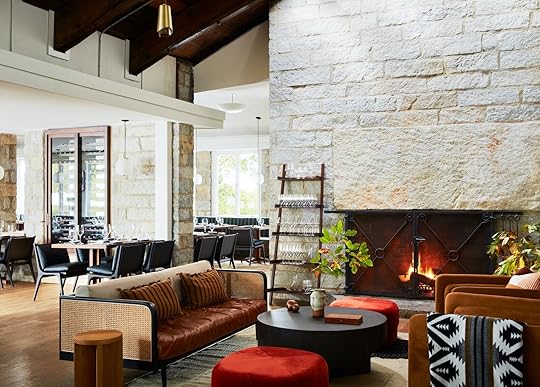
Photo: Tim Lenz
Guests of the lodge also have the option of hiding out at Butlers Lounge if they’re looking to avoid the weekend dinner and drinks crowd. There’s only enough space at the bar to accommodate a few patrons at a time, with a sunroom and patio to choose from once you have a drink in hand. A cozy reading nook also makes Butlers a pleasant daytime stop.
Between the woodsy location, homey furnishings, and indoor-outdoor layout that integrates the two, the irony of a place like Skyline Lodge is that you could easily spend an entire visit snuggled up on the property or out exploring the wilderness that is the lodge’s backyard. How you choose to experience Highlands is up to you — but if you’re headed in that direction, Skyline Lodge is a safe bet for a dreamy stay. 
This Philadelphia Hotel Pays Homage to the Historic Women who Once Called the Building Home

What are the necessary ingredients for a great staycation? That varies from person to person, but we’re pretty sure that a cozy bed in a relaxing suite is probably at the top of the list. For someone looking to relieve some stress close to home, accommodations at The Guild House Hotel, a boutique hotel in Philadelphia that pays homage to famous women, might be even more enticing.

Photo: Guild House Hotel
The Guild House Hotel is in the Washington Square West neighborhood of Center City, and history can be found down to the building’s studs. The building is the former home of the New Century Guild — a group of professional women including abolitionists, suffragettes, writers, and more. Women in the late 1800’s and early 1900’s were working to create change, and just like men already had for centuries, they needed a space that was just their own. Even further, the guild was the largest and most successful group of its kind and the first to offer assistance to women in the workforce. The guild took up home at 1307 Locust Street, where the hotel currently stands.

Photo: Guild House Hotel
While technically a boutique hotel, the space offers more of a boarding house vibe. Walking in is like entering a typical walk-up, with an unassuming hallway that takes you past one guest room and then a lounge, and on the first floor is one guest room and a lounge. That’s right — there is no formal check-in, and entry is electronic with every guest getting a unique code to access the building and their room.

Photo: Guild House Hotel
The 12 rooms have names like Mathilde, Gabrielle, and Edith; each one paying homage to a guild member. While the rooms are smaller (they’re referred to as salons or junior suites), they offer just enough to make you feel at home. They feature a modern take on early 20th-century art deco decor, and it feels luxurious to be in a room covered in jewel tones like amethyst and emerald. Each room has its own color scheme with perfect accent colors — think dark teal with white marble and a gold faucet in the kitchenette. The bathrooms also offer a contrast with white subway and gold features.

Photo: Guild House Hotel
The lounge area is low-traffic and a great workspace, since the rooms most encourage relaxation and slumber. Pack a book that you’ve been meaning to read, or even bring your laptop to get a few chapters of your novel done. Both the lounge and the third-floor ice room offer sparkling and still water on tap. Another special touch are all of the locally-sourced amenities, like Sip and Sonder Coffee and Blushing Wren Tea.

Photo: Guild House Hotel
Quality comfort food should probably be a priority on a staycation as well, and the area is surrounded by some of Philadelphia’s best restaurants. Guild House is on the same block as Green Eggs Cafe, a popular brunch spot, and Van Leeuwen Ice Cream is just a few blocks away. Right across the street is Bud and Marilyn’s, a local staple for American classics. Those who are plant-based don’t have search hard either, with tapas bar Charlie Was a Sinner in the same neighborhood, and Vedge right on the same street. While a staycation would be great, an individual or a couple could still be attracted to the hotel because of its proximity to many attractions. Just a couple of blocks away is the Kimmel Center, and it is less than a ten-minute walk from Independence Hall. It is even closer to the shops and eats on South Street. 
Matador Network's Blog
- Matador Network's profile
- 6 followers



